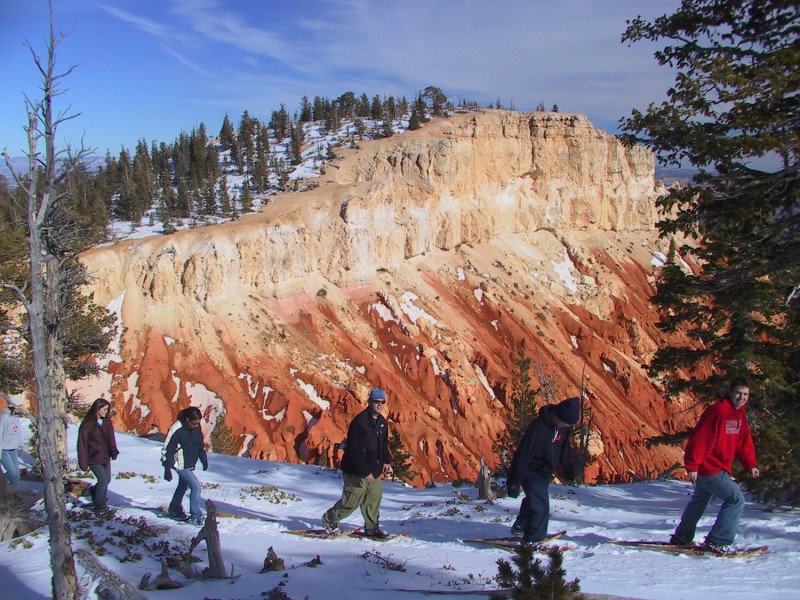
A group snowshoeing in Utah's Bryce Canyon National Park.
The first winter sport I learned was cross-country skiing, when at the age of four my parents dressed me in enough clothing that I more resembled a marshmallow than an actual child. While skimming across the fresh, iced snow on a pair of skis was not the most challenging sport I’ve ever learned, I have to admit that being introduced to cross-country skiing at an early age made it easier to carry the hobby into adulthood.
As signs of winter are starting to appear, I’ve noticed some friends and family members responding strangely to my questions regarding whether or not they’re planning to ski or snowboard this season. Many of them inform me that since they have never been skiing or snowboarding, they feel it is almost too late to get involved in them. Although this is far from the truth, I can understand how difficult it is attempting to keep up with friends who have more experience.
Rather than hide indoors for the entirety of winter, snowshoeing provides a more transitional approach to sports like snowboarding and skiing, and gives newbies a way to make the most of the cold weather. I was able to easily sell snowshoeing as a winter workout routine to my family once I told them how many calories they would burn in comparison to their more traditional means of exercising by walking or running.
An article published by Dr. Paul Burns in Snowshoe Magazine several years ago details the health benefits of snowshoeing, with particular attention placed on weight loss. One of his quick facts is that a 150-pound adult burns about 450 calories per hour while snowshoeing, which alone should be enough to convince people to try it out.
“When you snowshoe, you can burn up to 45 percent more calories than walking or running at the same speed. Several factors contribute to this increase. First, exercising in cold weather increases your metabolic rate. Second, you are walking with added weight on your feet—providing the same effect as wearing ankle weights. And there is the added resistance of moving through snow,” Burns explains.
I use an elliptical several times a week and can say that when I have the resistance as far up as it can be set, I still don’t burn as many calories as I would snowshoeing. This is not to say snowshoeing is the easiest exercise, however. While you’re doing a walking motion, it’s really the resistance from the snow that works your leg muscles. It definitely gets tiring with time, but a shorter workout can burn as many calories as more time spent walking or running, so you won’t need as long of a workout.
For runners who tend lay off the sport in the winter in regions that receive a lot of snow, snowshoeing is a great alternative. If you have trails that you frequently run on during the warmer months, they are most likely beautifully covered with snow in the winter and would make for the perfect snowshoeing location.
An additional bonus is that this exercise can save you from having to purchase a gym membership in the winter. The snowshoes can be relatively inexpensive to purchase, but are also available to rent in some locations.
Check out ActionHub’s advice for how to choose the right snowshoe.
Image from Dbenbenn on the Wikimedia Commons
 Your Privacy Choices
Your Privacy Choices
 The
The